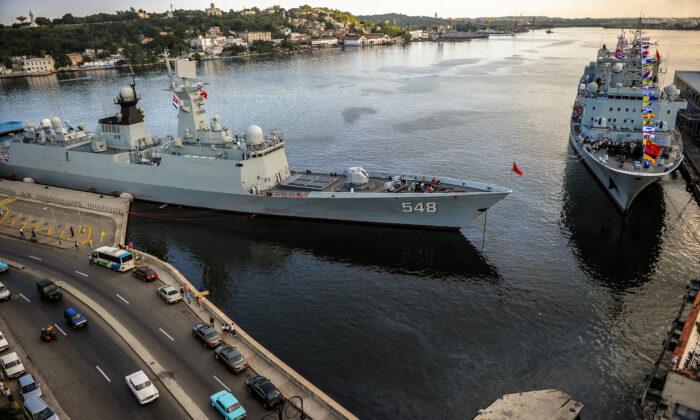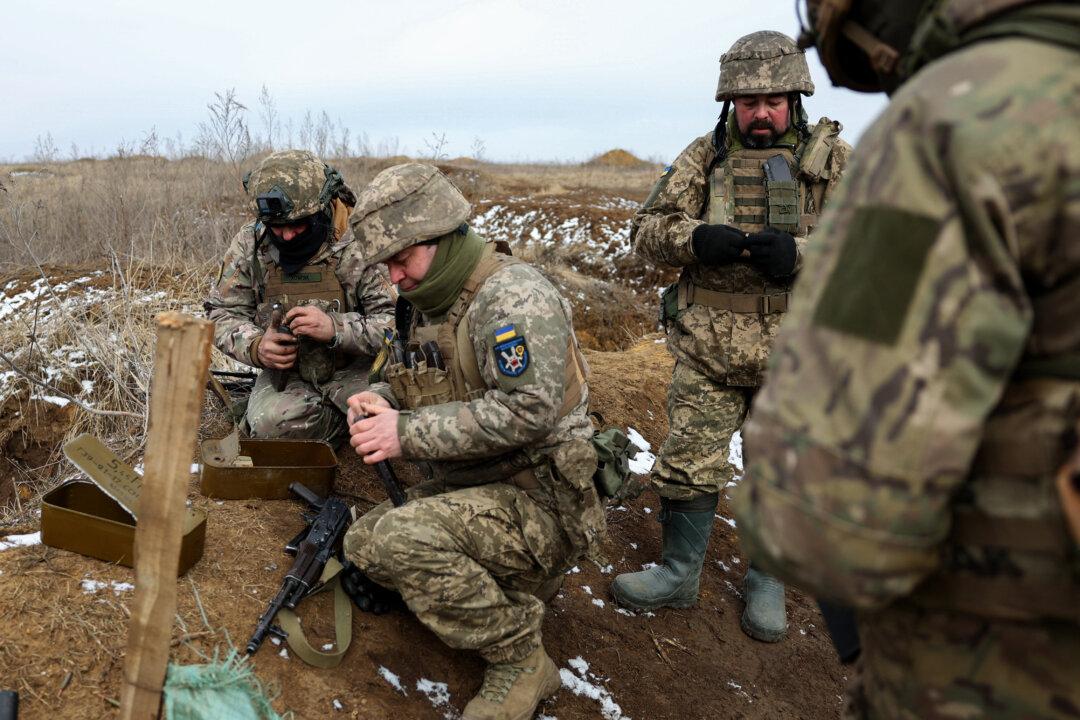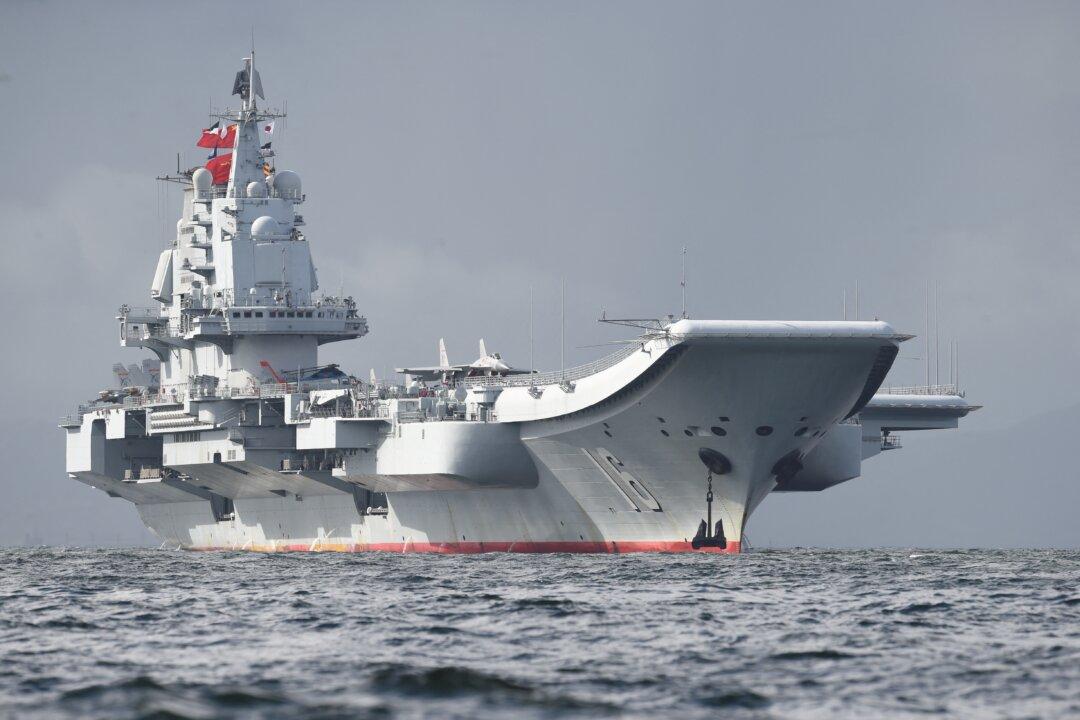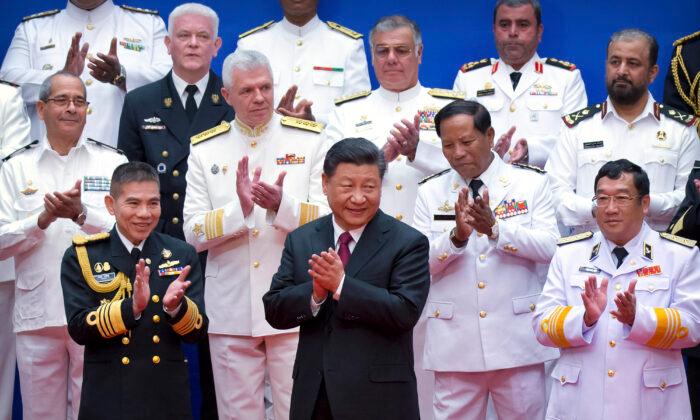With growing evidence of communist China’s expanding intelligence operations against the United States, this may be a good time to learn something about Beijing’s military intelligence agency that is planning and directing those activities—the People’s Liberation Army Strategic Support Force (PLASSF).
Established in December 2015 as one of the first steps in Chinese leader Xi Jinping’s comprehensive military reforms, the PLASSF incorporated the former PLA General Staff Department’s Second Directorate (Intelligence) and sections of the Third (Operations), absorbing all their assets, missions, and subordinate organizations. It has a large and growing long-range unmanned aerial vehicle (UAV) fleet, elements of which may be flying intelligence, surveillance, and reconnaissance missions off America’s Eastern and Gulf Coasts within the next two to three years. By 2030, the PLA may potentially base UAVs in Nicaragua to conduct similar missions off the U.S. Pacific Coast unless Washington starts taking diplomatic and economic actions to prevent it.
Possibly the world’s largest military intelligence organization, the PLASSF is responsible for China’s cyber, electronic, information, and space warfare; military intelligence, surveillance, and reconnaissance operations; command, control, and communications; and computer networks and systems (C4I) as well as the defense of China’s C4I and space-based systems. Its formation created an organization equivalent to the combination of the United States’ Cyber and Space Commands, Defense Intelligence, Information Systems, Mapping and National Security agencies, the CIA’s former National Reconnaissance Office, and all the U.S. military intelligence agencies. Its expanding long-range UAV fleet includes a brigade stationed in China’s Eastern Theater Command opposite Taiwan that regularly operates around that government’s territories.
The PLASSF expansion into America’s backyard began in or just before 2019. That growth continues today. New evidence arises almost daily about the PLASSF’s expanding presence outside China, as evidenced by recent reporting on China’s Signals Intelligence site in Cuba and military-age Chinese males trying to infiltrate a U.S. military base in Alaska and, of course, the balloon incidents of the last three years. Unfortunately, the reporting focuses on each event in isolation. Little attention has been directed at the PLASSF. That leadership and media failure all but ensures that the United States will endure regular intelligence surprises about China’s intelligence operations over the next decade.
First, American leaders and the public must learn about and take a realistic view of the PLASSF. As noted above, it was the first new command established under Mr. Xi’s reform program. His goal in implementing his military reforms had three purposes: 1) tighten the Communists Party’s control over the PLA; 2) improve PLA joint warfighting capabilities; 3) ensure effective operations in distant theaters far from China. Of those goals, the first was the most important, and that might explain why Mr. Xi consolidated all the PLA’s intelligence and C4I under one agency reporting directly to China’s Central Military Commission that he controls. Given Mr. Xi’s tendency to imprison or “disappear” those who displease him, it is naive to believe that the PLASSF leadership he appointed would initiate any aerial collection mission deeply into U.S. air space without his knowledge or approval.
This year’s balloon incident was not the first conducted over U.S. air space. Earlier missions in 2020 and 2021 reportedly flew over Guam and Hawaii, a U.S. territory and state, respectively. More importantly, those missions reflect the PLASSF’s growing mission profiles. It has expanded its intelligence facilities inside China, built new ones in the South China Sea, and opened one in Cuba within the last three years. And there is more to come.
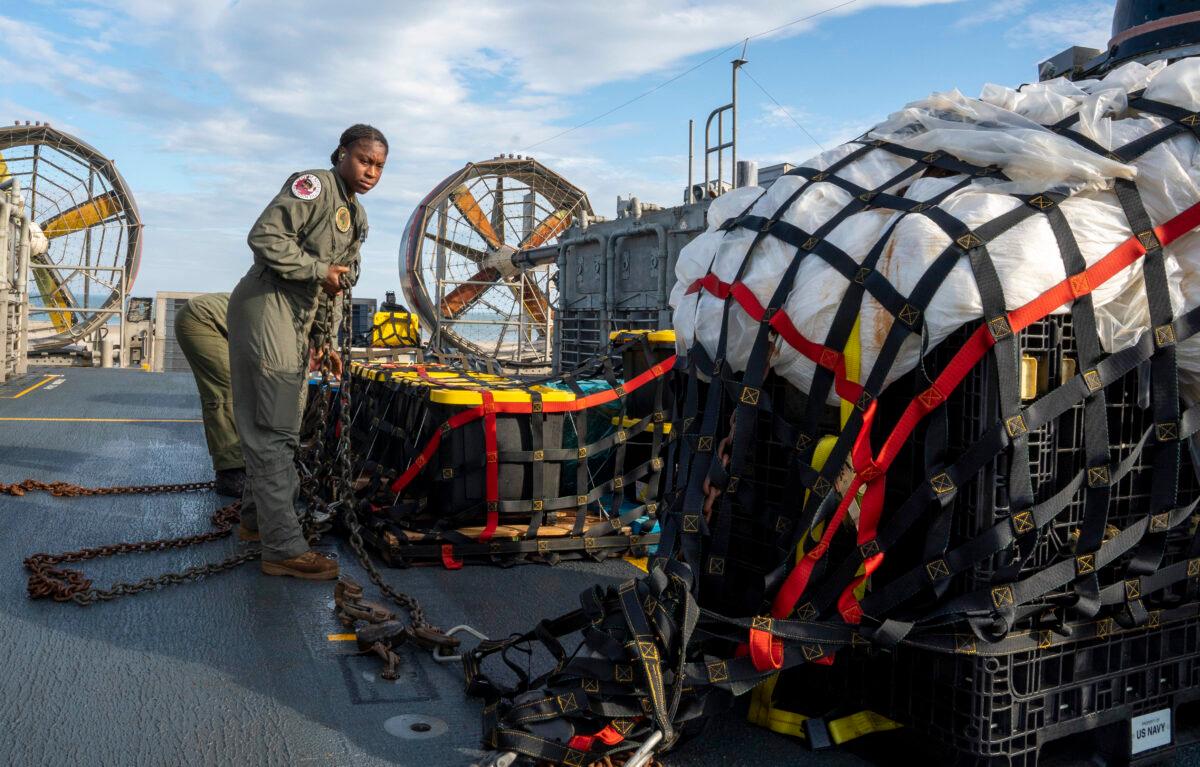
China has announced it will put a training facility and unit in Cuba within the next few years. That training unit will include at least a regiment of long-range UAVs, ostensibly to train Cuban operators in their operations but also to conduct intelligence collection and surveillance of U.S. military and commercial air and maritime traffic in the Caribbean, Gulf of Mexico, and Western Atlantic Ocean. Barring effective American pressure, that “training” unit probably will include a squadron of long-range intelligence, surveillance, and reconnaissance (ISR) before the decade’s end. Given American leaders’ short-sightedness, the UAV deployment and operations will present another “surprise” to generate media coverage and pointless rhetoric. Moreover, while American media and leaders may focus on that predictable development, they will miss the bigger picture.
China’s Cuba presence should be a wake-up call and seen as an important first step in the PLASSF’s potential Western Hemisphere plans. With Mr. Xi regularly stating his intention to force Taiwan’s reunification with China via military action, the PLASSF faces a requirement to gather detailed intelligence and near continuous monitoring of U.S. air and naval operations in the Eastern Pacific Ocean. Those waters and air space are where the U.S. Indo-Pacific Theater’s U.S. Navy and Marine Corps units conduct the initial-to-final stages of their pre-deployment training. That intelligence collection and surveillance would provide critical insights into those units’ combat readiness and vital intelligence on American tactical and technological experimentation and testing of new concepts and systems. Those constitute essential elements of information about any potential military opponent, both before and during a crisis or conflict. PLA UAVs stationed in a China-aligned Central American country with a Pacific coastline can fulfill that requirement.
As China’s military operations expand globally, so will those of the agency responsible for providing intelligent support to PLA forces. In the Western Hemisphere, China has invested heavily in Latin America and clearly intends to use America’s traditional enemy in that region, Cuba, as a hub and forward base. Other cash-strapped countries that might prove amendable to Beijing’s inducements include Nicaragua and Venezuela. Still, those initiatives lie several years away and may be affected by wise or unwise American policies. The same may be said for Brazil and West Africa, the former a rising Latin American power and the latter an increasingly important economic center that the United States tends to castigate or ignore.
Facilities in the United State’s backyard may be the priority, but China’s leaders also have their eyes elsewhere. China will not abandon its efforts to acquire overseas bases but intelligence facilities—masquerading as satellite downlink or tracking stations—may prove an easier sell to countries seeking high-tech facilities on their soil. The negotiations will neither be fast nor particularly smooth since those countries have had bad experiences with foreign presences, creating an opportunity for American counter-influence if it is applied wisely and diplomatically. Sanctions are an overused tool in American diplomacy. Positive inducements may work where applying the United States’ declining economic leverage has failed.
Facilities and activities on the Earth’s surface and atmosphere are but one aspect of the PLASSF’s charter and operations. American leaders need to recognize and understand the PLA organization tasked to penetrate and undermine U.S. security. The PLASSF has been at war with the United States for over 10 years, conducting cyber-espionage and cyber-attacks against the United States’ defense industries, public utilities, and transportation networks and systems for the last 5–10 years. Although the extent of those operations remains debated, leadership and public knowledge about the PLA agency conducting those operations is vital to addressing the challenge. Ignorance, on the other hand, precludes effective deterrence and could prove costly in war.
American leaders need to recognize that China thinks long-term. Beijing plans and acts today to shape the politico-military-economic environment within 5–10 years, if not further out. It is clear China is establishing a foothold in the United States’ southern periphery. That foothold will not be used to America’s benefit. Today’s intelligence facilities and operations should be seen as precursors to future force deployments. Such highly respected defense analysts as Dr. Gordon Chang and Bradley Thayer have warned China may deploy strategic weapons to Cuba. Instead of waiting until that happens, Washington needs to learn what China may do next and, more importantly, start preparing options for deterring or stopping Beijing’s intentions before they occur.
